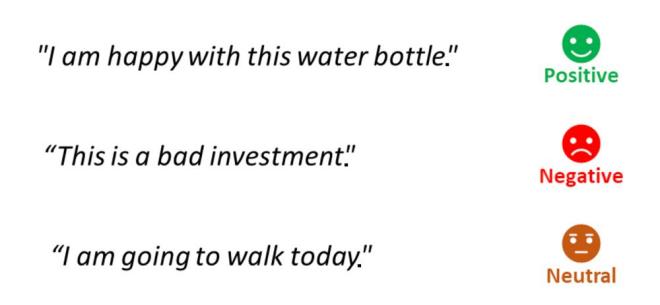Text sentiment analysis methods (1) - Lexicon-based sentiment analysis methods
Introduction to text sentiment analysis
Inputting a text, and then the electronic system automatically feeds you what kind of sentiment orientation the text has, whether it is positive or negative, this is text sentiment analysis, also known as Opinion Mining. It refers to the process of collecting, processing, analyzing, summarizing and reasoning about subjective text with emotion, which involves various research fields such as artificial intelligence, machine learning, data mining and natural language processing.
Text sentiment analysis is an important branch in the field of natural language processing, which is widely used in public opinion analysis and content recommendation, etc. It is a hot research topic in recent years. According to the different methods used, they are classified into sentiment analysis methods based on sentiment lexicons, sentiment analysis methods based on traditional machine learning, and sentiment analysis methods based on deep learning.
Introduction of lexicon-based sentiment analysis methods
The method based on sentiment lexicons refers to the division of sentiment polarity under different granularity based on the sentiment polarity of sentiment words provided by different sentiment lexicons.

Firstly, the text is input and pre-processed through the data (including denoising, removing invalid characters, etc.), followed by word separation operation, then the words of different types and degrees from the sentiment lexicons are put into the model for training, and finally the sentiment types are output according to the sentiment judgment rules.
Most of the existing sentiment lexicons are constructed manually, and according to the different granularity of division, the existing sentiment analysis tasks can be classified into word, phrase, attribute, sentence, chapter and other levels.
Manual construction of sentiment lexicons is costly and requires reading a large amount of relevant materials and existing lexicons, summarizing words containing sentiment tendencies by summarizing them and labeling them with different levels of sentiment polarity and intensity.
Advantages and disadvantages:
The sentiment lexicon-based approach can accurately reflect the unstructured features of the text and is easy to analyze and understand. In this method, the sentiment classification effect is more accurate when the coverage and accuracy of sentiment words are high.
However, this method still has some defects.
The sentiment classification method based on sentiment lexicons mainly depends on the construction of sentiment lexicons, but due to the rapid development of the network at this stage and the speed of information update, there are many new words on the network, and the recognition of these new words does not work well, and the existing sentiment lexicons need to be continuously expanded to meet the needs.
The same sentiment word in sentiment lexicons may express different meanings at different times, in different languages or in different domains, so the method based on sentiment lexicons is not very effective in cross-domain and cross-language.
When using sentiment lexicons for sentiment classification, the semantic relationships between contexts are often not considered.
Therefore more scholars are needed to conduct sufficient research on sentiment lexicon based methods.
銆怬pen Source Intelligence銆戔棌5 Hacking Forums Accessible by Web Browsers
銆怰esources銆戔棌The Achilles heel of AI startups: no shortage of money, but a lack of training data
【Dark Web】●5 Awesome Dark Web Links
【Artificial Intelligence】●Advanced tips for using ChatGPT-4
【Open Source Intelligence】●10 core professional competencies for intelligence analysts
銆怤etwork Security銆戔棌9 popular malicious Chrome extensions
【Web Intelligence Monitoring】●Advantages of open source intelligence



